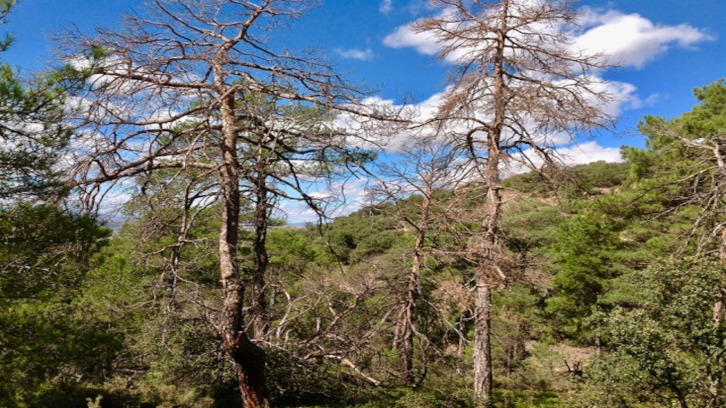Can forests survive climate change?

Forests around the world are witness to Climate Change. Mortality episodes coincide with periods of severe drought that are accompanied by heat waves, and these periods are becoming increasingly frequent. In this article, researchers from CREAF and the UAB describe their study, in which they analyze the resilience capacity of 131 forests spread throughout the world. Although their evolution, following a period of drought, it depends on the first stages of recovery, the results after 20 years of the mortality episode show the transformative capacity of this phenomenon. A very important information to know how they respond and how we can act to promote their resilience.
In recent years, tree mortality episodes have been detected in forests around the world, from tropical, rain forests to boreal forests. The causes of such mortality can be multiple, but it has been proven in many cases that they coincide with periods of extreme drought, often accompanied by heat waves. Due to climate change, these weather events are becoming more frequent in many regions, and their incidence is expected to increase in the near future. Therefore, we need to know the capacity of forests to recover after these mortality episodes, that is, their resilience.
With this objective, the team led by Enric Batllori and Francisco Lloret, CREAF researchers, and in the case of F. Lloret, also professor at the UAB Dept. of Animal Biology, Plant Biology and Ecology, have analyzed this recovery in 131 forests of the five continents, excluding the tropics, and have published the results in the journal Proceedings of the National Academy of Sciences. Although we will have to follow the future evolution of these forests affected by drought to know their final destination, this evolution will largely depend on the first stages of forest recovery. The study characterized, up to 20 years after the episodes, the woody species that grew in the space left by the dead trees of the dominant forest species.
The results have revealed that in almost 70% of the forests, the species that previously dominated the forest tends to be replaced by other tree and shrub species, and that in 10% of the forests the forest cover is lost in favor of herbaceous species. In other words, these episodes have an important capacity to transform forests in the short term. The replacement of trees by shrubs was reinforced in forests that had experienced high intensity of management (e.g., with tree plantation), or that had also been affected by insect pests or pathogenic fungi. When analyzing the species that replaced the dominant trees before the drought episode, a great variability was observed among different forest types and even among different forests dominated by the same species, depending on each situation. However, tree replacement by species that show greater tolerance to drought emerged as a general trend, indicating that new forests tend to be more similar to those that grow in more arid climates.
The study shows that the resilience of forests to extreme drought events is limited. In a substantial percentage of cases, there is no short term signs that previously dominant tree species regain their preponderance, and in several cases trees may even be lost in favor of shrubs or grasses. These results provide important information on the response of forests to climate change, particularly in front of intense droughts and heat waves, and allow the identification of actions that can favor the resilience of forests, such as performing a less aggressive management, favoring the presence of species adapted to the new climatic conditions.
Enric Batllori 2,3, Francisco Lloret1,2,
1Unidad de Ecología, Departamento de Biología Animal, Biología Vegetal y Ecologia, Universitat Autònoma Barcelona (UAB).
2Centro de Investigación Ecológica y Aplicaciones Forestales (CREAF).
3Unidad de Botaánica, Departamento de Biología Evolutiva, Ecología y Ciencias Ambientales, Universitat de Barcelona (UB).
References
Batllori, Enric. Lloret, Francisco, et al. (2020) Forest and woodland replacement patterns following drought-related mortality. Proc Nat Acad Sci PNAS 117: 29720–29729. doi.org/10.1073/pnas.2002314117


